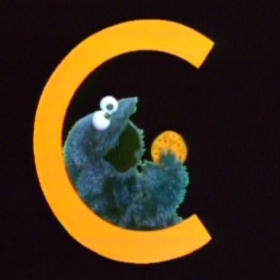Non-Deictic Timing

How do you talk about time in Icelandic? With a LOT of different expressions. Much too many to talk about in one article. So in this instalment in our series on time we'll focus on non-deictic timing expressions. We'll refer briefly to Deictic Timing, but you don't have to have read that to understand this article.
In Deictic Timing we learned about…well, deictic timing. These are expressions which are relative to the now. Today doesn't mean the same thing on April 3rd, 1992 as it does on January 19th, 2040.
Non-deictic timing expressions, then, are not relative to the here and now. No matter when you say it, October 21st, 2015, always means the same thing. These expressions are all nouns, as opposed to adverbs of time (like í gær (yesterday), um morguninn (in the morning), etc.).
In this article we'll look at non-deictic timing expressions in descending order of scale, from centuries, to decades, to years, to dates and hours. We'll also learn about the temporal accusative necessary with some of them.
Centuries
Öld is the Icelandic equivalent to century. The preposition á is used as the Icelandic equivalent to in, like in the 20th century. Á takes the dative case here, which fits with what we learned about it in í, á, yfir, undir (remember, the dative indicates not motion towards, and there's certainly no motion here). When the century is the subject of the phrase it is in the nominative, which fits with what we learned about Cases and Verbs.
- Tuttugasta öldin(nom) var öld tækniframfara > The twentieth century was a century of technological progress.
- Gufuvélin var fundin upp á átjándu öldinni(dat) > The steam engine was invented in the eighteenth century.
Just as in English, ordinal numbers are used to refer to the centuries and decades. Those are numbers like first, second, third instead of one, two, three. When numbers are not spelled out with letters, a period after the number indicates an ordinal just like st, nd, rd, th (1st, 2nd, 3rd, 4th) in English. The examples below are read exactly the same as the ones above.
- 20. öldin(nom) var öld tækniframfara > The 20th century was a century of technological progress.
- Gufuvélin var fundin upp á 18. öldinni(dat) > The steam engine was invented in the 18th century.
Decades
Áratugur is the Icelandic equivalent to decade. Like with öld, á is the equivalent to in, like in the eighties. It takes the dative case here, just like á with the centuries. When the decade is the subject of the phrase it is, of course, in the nominative.
- Fimmti áratugurinn(nom) var góður fyrir bebop djass > The forties were good for bebop jazz (lit. the fifth decade).
- Bítlarnir voru virkir á 7. áratugnum(dat) > The Beatles were active in the sixties (lit. in the 7th decade).
Unlike English, Icelandic refers to decades in the same way as centuries. The 10th century was 901-1000, and the 90's were the 10th decade. This may seem overly complicated, until one realizes that this renders moot the debate of whether to call the first decade of the 21st century the aughts, the naughts, the two-thousands, the oh-ohs, the double-ohs, the nils, the nillies or the zeroes: it was simply the first decade. This alone makes any amount of confusion worth it.
Also note that while the decades of the 20th century generally stand on their own, like in the examples above, other centuries are specified.
- Fyrsti(nom) áratugur(nom) tuttugustu(gen) og fyrstu(gen) aldarinnar(gen) var mótaður af árásinni á tvíburaturnana > The first decade of the twenty first century (the two thousands? The aughts? Please god not the nillies) was shaped by the attack on the Twin Towers.
- Bandaríska borgarastyrjöldin átti sér stað á 7.(dat) áratug(dat) 19.(gen) aldarinnar(gen) > The American Civil War took place in the 1860s (lit. in the 7th decade of the 19th century).
Note that when the century is specified, it is in the genitive (gen), as it is the “possessor” of the decade, which is “possessed”. This is perfectly regular, as we learned in Cases and Possession.
Temporal Accusative
In our series on cases we learned about verbs and prepositions being case assigners, how the case of a noun generally depends on the verb or preposition preceding it. The temporal accusative is one of the rare instances where the case changes without a case assigner. Temporal accusative is really just a fancy way of saying “use the accusative with a non-deictic timing expression.”
Centuries and decades, as shown above, are indicated with a preposition assigning the dative case (the century “possessing” the decade taking the genitive, as it is a possessor). Years and dates, however, are indicated with the temporal accusative.
Years
Ár is the Icelandic equivalent to year. Some readers will have noticed that this word appears in the word for decade, áratugur. This is literally a year ten, or a ten-year. Years are not indicated with any preposition, but with the temporal accusative. Fortunately for the second language student, the accusative of ár (year) looks the same as the nominative – ár(nom), ár(acc) – so, practically, nothing changes. When the year is the subject of the phrase, it is in the nominative.
- Nítján hundruð sextíu og eitt(nom) var gott ár fyrir Bordeaux vín > Nineteen sixty one was a good year for Bordeaux wines.
- Kant gaf út Grundvöll að frumspeki siðferðilegrar breytni árið(acc) sautján hundruð áttatíu og fimm(acc) > Kant published his Groundwork of the Metaphysics of Morals in seventeen eighty five.
In the examples above the years are spelled out for ease of reading for the second language learner, but generally they would be written numerically (1961 and 1785). Note that the word árið is omitted in the first example: omitting árið is optional and has no effect on meaning, but omitting the word árið may be preferred if árið comes up soon after (like in the example) to avoid repeating the word árið too much. Árið.
Date
Dagsetning (lit. day-putting) is the Icelandic equivalent to the word date (when indicating time, not when indicating a scheduled event, a stone fruit, or romantic entanglement). The date is indicated with ordinals (“counting numbers” like 1st, 2nd, 3rd) in the accusative. The temporal accusative negates the need for any preposition. Of course, when the date is the subject of the phrase, like in the first example below, it is in the nominative.
- Fyrsti(nom) janúar er fyrsti dagur ársins > January first is the first day of the year.
- Jón á afmæli fyrsta(acc) janúar > Jón's birthday is January first.
Hour
Klukkan, in addition to meaning literally the clock, is the Icelandic equivalent to (at) something (o'clock). Interestingly, despite not requiring a preposition, it does not require the accusative like the year and date. It seems every exception needs an exception in Icelandic, and the clock is that exception for the temporal accusative.
- Klukkan(nom) fjögur(nom) er besti tími dagsins > Four o'clock is the best time of day.
- Anna fer á fætur klukkan(nom) níu(nom) > Anna gets up at nine.
We go into detail about the clock in our article How to Tell the Time.
Summary
Öld and áratugur are indicated with the preposition á. Ár, the date, and the time don't take a preposition due to the temporal accusative. Ages possess their decades.
Related reading
If you found this interesting, you might also be interested in these articles.




